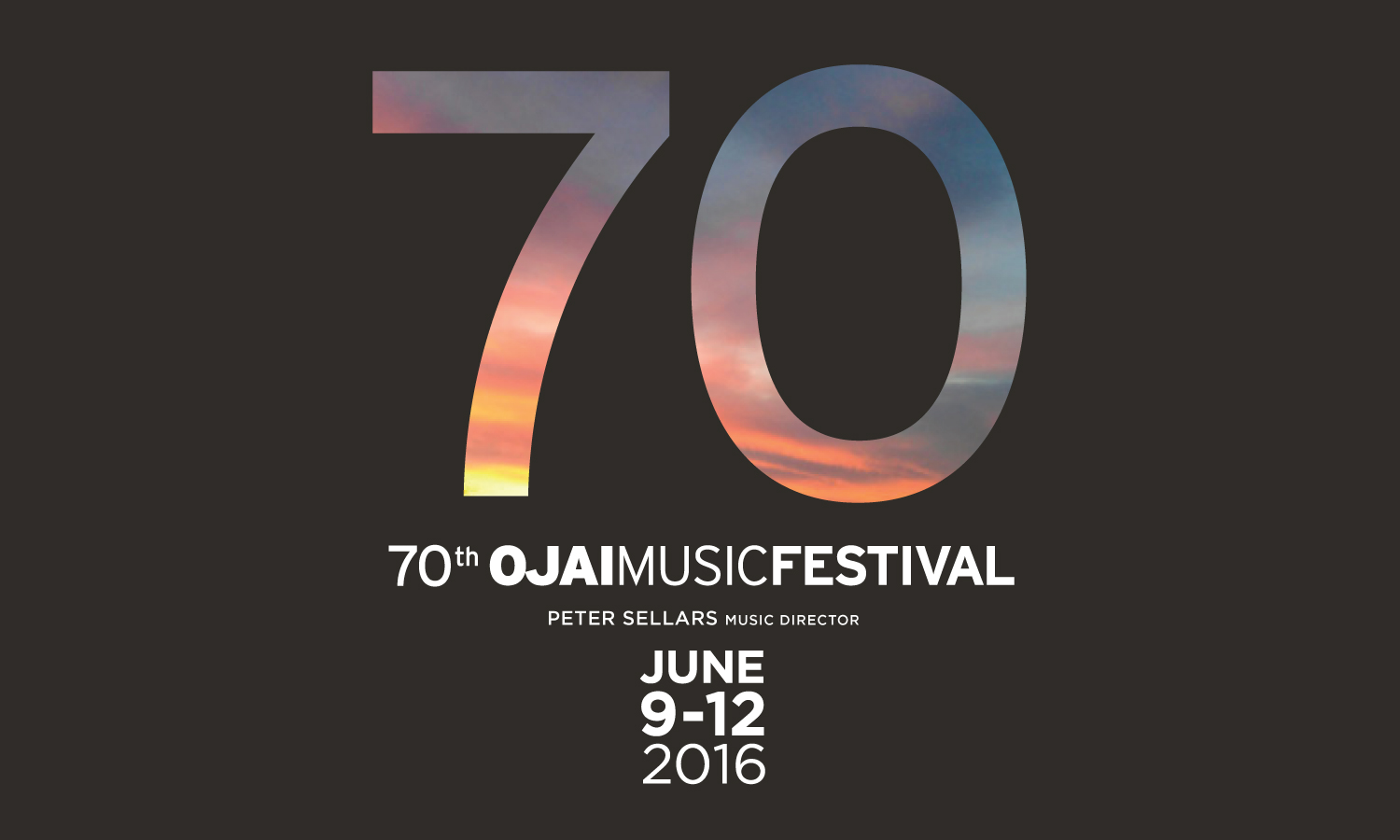Susan McClary, musicologist
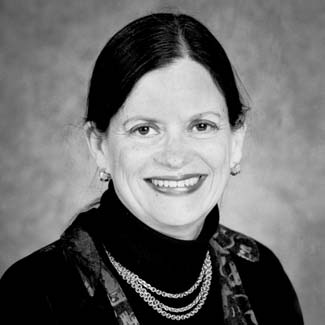
 Dr. Susan McClary (Professor of Music at Case Western Reserve University; Distinguished Professor Emerita, UCLA) focuses her research on the cultural criticism of music. Her books include Feminine Endings: Music, Gender, and Sexuality; Georges Bizet: Carmen; Conventional Wisdom: The Content of Musical Form; Modal Subjectivities: Renaissance Self-Fashioning in the Italian Madrigal; Reading Music; Desire and Pleasure in 17th-Century Music; and Structures of Feeling in 17th-Century Expressive Culture. McClary received a MacArthur Foundation “Genius” Fellowship in 1995, and her work has been translated into at least 20 languages. She is now completing a book titled The Passions of Peter Sellars: The Staging of Music Drama.
Dr. Susan McClary (Professor of Music at Case Western Reserve University; Distinguished Professor Emerita, UCLA) focuses her research on the cultural criticism of music. Her books include Feminine Endings: Music, Gender, and Sexuality; Georges Bizet: Carmen; Conventional Wisdom: The Content of Musical Form; Modal Subjectivities: Renaissance Self-Fashioning in the Italian Madrigal; Reading Music; Desire and Pleasure in 17th-Century Music; and Structures of Feeling in 17th-Century Expressive Culture. McClary received a MacArthur Foundation “Genius” Fellowship in 1995, and her work has been translated into at least 20 languages. She is now completing a book titled The Passions of Peter Sellars: The Staging of Music Drama.
Claudia Rankine, poet
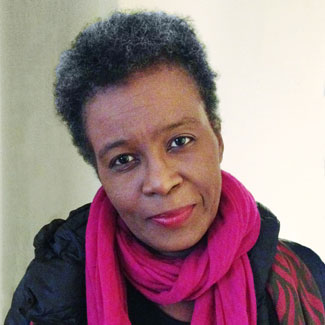
 Claudia Rankine is the author of five collections of poetry including Citizen: An American Lyric and Don’t Let Me Be Lonely; two plays including Provenance of Beauty: A South Bronx Travelogue; numerous video collaborations, and is the editor of several anthologies including The Racial Imaginary: Writers on Race in the Life of the Mind.For her book Citizen, Rankine won both the PEN Open Book Award and the Pen Literary Award, the NAACP Award, and the National Book Critics Circle Award for Poetry. Citizen was the first book ever to be named a finalist in both the poetry and criticism categories and was a finalist for the National Book Award. Citizen also holds the distinction of being the only poetry book to be a New York Times bestseller in the nonfiction category.
Claudia Rankine is the author of five collections of poetry including Citizen: An American Lyric and Don’t Let Me Be Lonely; two plays including Provenance of Beauty: A South Bronx Travelogue; numerous video collaborations, and is the editor of several anthologies including The Racial Imaginary: Writers on Race in the Life of the Mind.For her book Citizen, Rankine won both the PEN Open Book Award and the Pen Literary Award, the NAACP Award, and the National Book Critics Circle Award for Poetry. Citizen was the first book ever to be named a finalist in both the poetry and criticism categories and was a finalist for the National Book Award. Citizen also holds the distinction of being the only poetry book to be a New York Times bestseller in the nonfiction category.
Among her numerous awards and honors, Rankine is the recipient of the Poets & Writers’ Jackson Poetry Prize and fellowships from the Lannan Foundation and the National Endowment of the Arts. She lives in California and is the Aerol Arnold Chair in the University of Southern California English Department.
Roomful of Teeth
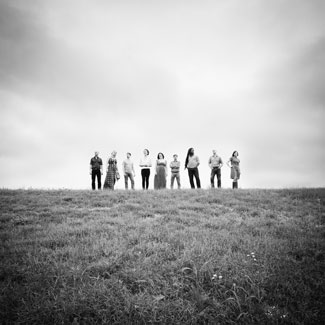
 Roomful of Teeth is a Grammy Award–winning vocal project dedicated to mining the expressive potential of the human voice. Through study with masters from singing traditions the world over, the eight-voice ensemble continually expands its vocabulary of singing techniques and, through an ongoing commissioning process, forges a new repertoire without borders. Founded in 2009 by Brad Wells, the group gathers annually at the Massachusetts Museum of Contemporary Art (MASS MoCA) in North Adams, MA, where they’ve studied Tuvan throat singing, yodeling, belting, Inuit throat singing, Korean P’ansori, Georgian singing, Sardinian cantu a tenore, Hindustani music, and Persian classical singing with some of the world’s top performers and teachers. Commissioned composers include Rinde Eckert, Judd Greenstein, Merrill Garbus (of tUnE-yArDs), Anna Clyne, Fred Hersch, Sarah Kirkland Snider, Michael Harrison, Sam Amidon, and Ted Hearne.
Roomful of Teeth is a Grammy Award–winning vocal project dedicated to mining the expressive potential of the human voice. Through study with masters from singing traditions the world over, the eight-voice ensemble continually expands its vocabulary of singing techniques and, through an ongoing commissioning process, forges a new repertoire without borders. Founded in 2009 by Brad Wells, the group gathers annually at the Massachusetts Museum of Contemporary Art (MASS MoCA) in North Adams, MA, where they’ve studied Tuvan throat singing, yodeling, belting, Inuit throat singing, Korean P’ansori, Georgian singing, Sardinian cantu a tenore, Hindustani music, and Persian classical singing with some of the world’s top performers and teachers. Commissioned composers include Rinde Eckert, Judd Greenstein, Merrill Garbus (of tUnE-yArDs), Anna Clyne, Fred Hersch, Sarah Kirkland Snider, Michael Harrison, Sam Amidon, and Ted Hearne.
Kaija Saariaho
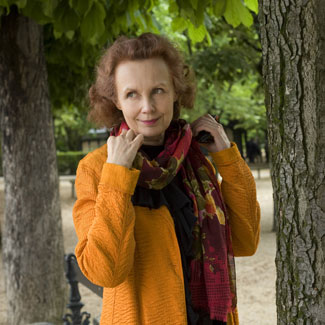
 Kaija Saariaho is a prominent member of a group of Finnish composers and performers who are now, in mid-career, making a worldwide impact. Born in Helsinki in 1952, she studied at the Sibelius Academy there with the pioneering modernist Paavo Heininen and, with Magnus Lindberg and others, she founded the progressive ‘Ears Open’ group. She continued her studies in Freiburg with Brian Ferneyhough and Klaus Huber, at the Darmstadt summer courses, and, from 1982, at the IRCAM research institute in Paris – the city which has been most of the time her home ever since.
Kaija Saariaho is a prominent member of a group of Finnish composers and performers who are now, in mid-career, making a worldwide impact. Born in Helsinki in 1952, she studied at the Sibelius Academy there with the pioneering modernist Paavo Heininen and, with Magnus Lindberg and others, she founded the progressive ‘Ears Open’ group. She continued her studies in Freiburg with Brian Ferneyhough and Klaus Huber, at the Darmstadt summer courses, and, from 1982, at the IRCAM research institute in Paris – the city which has been most of the time her home ever since.
Caroline Shaw
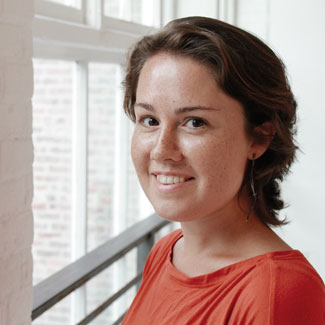
 Caroline Adelaide Shaw is a New York-based musician appearing in many different guises. Trained primarily as a violinist from an early age in North Carolina, she is a Grammy-winning singer in Roomful of Teeth and in 2013 became the youngest ever winner of the Pulitzer Prize for Music, for her enigmatic composition Partita for 8 Voices (also nominated for a Grammy for Best Classical Composition). She will make her solo violin debut in 2015 with the Cincinnati Symphony (MusicNOW).
Caroline Adelaide Shaw is a New York-based musician appearing in many different guises. Trained primarily as a violinist from an early age in North Carolina, she is a Grammy-winning singer in Roomful of Teeth and in 2013 became the youngest ever winner of the Pulitzer Prize for Music, for her enigmatic composition Partita for 8 Voices (also nominated for a Grammy for Best Classical Composition). She will make her solo violin debut in 2015 with the Cincinnati Symphony (MusicNOW).
Christine Southworth, composer
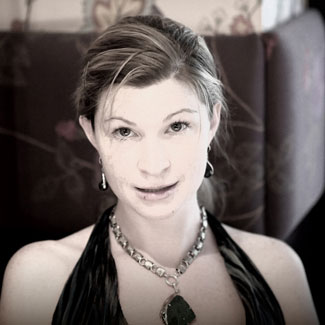
 Christine Southworth (b. 1978) is a composer and video artist based in Lexington, Massachusetts, dedicated to creating art born from a cross-pollination of sonic and visual ideas. Inspired by intersections of technology and art, nature and machines, and musics from cultures around the world, her music employs sounds from man and nature, from Van de Graaff Generators to honeybees, Balinese gamelan to seismic data from volcanoes.
Christine Southworth (b. 1978) is a composer and video artist based in Lexington, Massachusetts, dedicated to creating art born from a cross-pollination of sonic and visual ideas. Inspired by intersections of technology and art, nature and machines, and musics from cultures around the world, her music employs sounds from man and nature, from Van de Graaff Generators to honeybees, Balinese gamelan to seismic data from volcanoes.
Southworth received a B.S. from MIT in 2002 in mathematics and an M.A. in Computer Music & Multimedia Composition from Brown University in 2006. In 2003 she co-founded Ensemble Robot, a collaborative of artists and engineers that design and build musical robots. She is the general manager of the MIT-based Gamelan Galak Tika, and has composed several pieces for the group and performed at venues including Lincoln Center, Carnegie Hall, EMPAC, the Cleveland Museum of Art, several Bang on a Can Marathons, and the Bali International Arts Festival.
Davóne Tines, bass-baritone
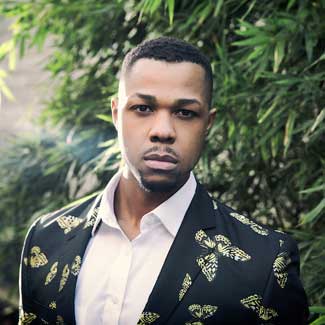
 Davóne Tines, deemed a “… charismatic, full-voiced bass-baritone …” by the New York Times, is building an international career commanding a broad spectrum of opera and concert performance. This past season included appearances with the Boston Pops in Symphony Hall and at Tanglewood, where he was a Tanglewood Music Center Fellow, as well as a debut with the American Repertory Theater in the world premiere of Matthew Aucoin’s opera Crossing, directed by multiple Tony Award–winning director Diane Paulus, for which the Wall Street Journal called him a “glowing bass-baritone” and the Stylus Music Journal said he “… brought the house down with his eloquent and painful singing” in the leading role of Freddie Stowers.
Davóne Tines, deemed a “… charismatic, full-voiced bass-baritone …” by the New York Times, is building an international career commanding a broad spectrum of opera and concert performance. This past season included appearances with the Boston Pops in Symphony Hall and at Tanglewood, where he was a Tanglewood Music Center Fellow, as well as a debut with the American Repertory Theater in the world premiere of Matthew Aucoin’s opera Crossing, directed by multiple Tony Award–winning director Diane Paulus, for which the Wall Street Journal called him a “glowing bass-baritone” and the Stylus Music Journal said he “… brought the house down with his eloquent and painful singing” in the leading role of Freddie Stowers.
Relive the 2015 Festival through our photo gallery
Thank you for joining us for an incredibly memorable week of adventurous music making and community. Relive the moments with our 2015 Festival photo galleries of concerts and scenes from around Libbey Bowl.
2016 Festival
2016 Music Director Peter Sellars
frames programming for 70th Ojai Music Festival
June 9-12, 2016
The Ojai Music Festival marks its 70th year in 2016 and to curate this milestone, Artistic Director Thomas W. Morris has invited opera and theater director Peter Sellars to serve as Music Director. For the 2016 Festival, Peter Sellars is shaping a program deeply rooted in the cultures of Ojai, starting new traditions and setting out fresh agendas for the 70 years to come. The Festival will take place June 9-12, 2016.
As the 69th Ojai Music Festival opens this week (June 10-14, 2015) with Music Director Steven Schick, the Festival’s 2016 Music Director Peter Sellars shares thoughts on his distinctive approach to programming the Festival:
YOLA
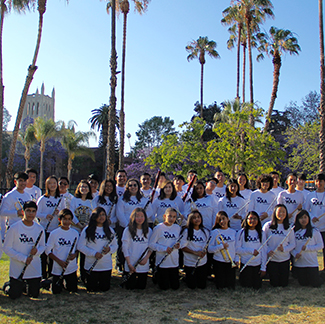
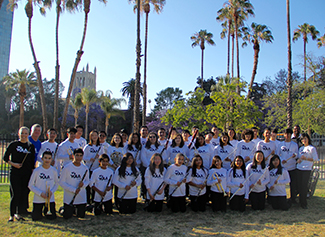 About the YOLA at HOLA Symphonic Winds
About the YOLA at HOLA Symphonic Winds
Through YOLA, the Los Angeles Philharmonic and its community partners provide free instruments, intensive music training, and academic support to students from underserved neighborhoods, empowering them to become vital citizens, leaders and agents of change. Inspired by El Sistema – the Venezuelan music education system that nurtured the LA Phil’s Music Director Gustavo Dudamel – YOLA has grown to serve more than 700 students at three sites across Los Angeles since its founding in 2007.
Comprised of 35 students ages 12 – 18, the YOLA at HOLA Symphonic Winds are founding members of YOLA at Heart of Los Angeles (HOLA). Currently, in its seventh year, the site at HOLA serves students ages 6 – 18 with intensive after-school orchestral instruction five days a week. A holistic approach fosters a sense of community and provides students with the opportunity to take advantage of HOLA’s exceptional programs and resource.
John Luther Adams on “Sila: The Breath of the World”
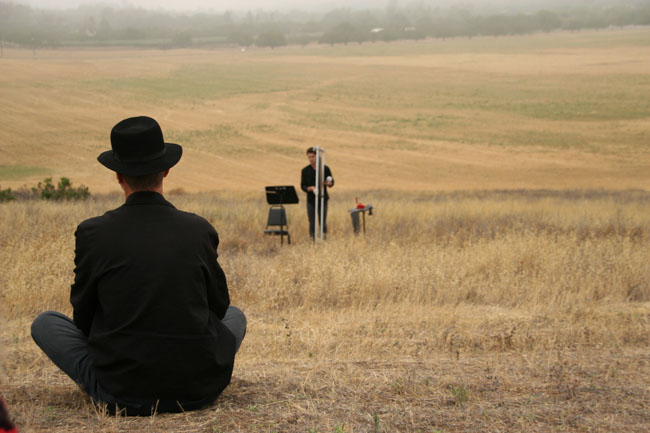
Composer John Luther Adams is no stranger to Ojai, with performances of his works in 2012 and 2013, including the ‘Inuksuit‘, featuring musicians placed throughout Libbey Park. Adams returns to Ojai this year for the West Coast Premiere of his new work ‘Sila: The Breath of the World’. Here he discusses the genesis of the piece and the significant differences in pieces written to be performed and heard outdoors.
“Songs are thoughts which are sung out with the breath when people let
themselves be moved by a great force…”
– Orpingalik, a Netsilik elder
In Inuit tradition the spirit that animates all things is sila, the breath of
the world. Sila is the wind and the weather, the forces of nature. But
it’s also something more. Sila is intelligence. It’s consciousness. It’s
our awareness of the world around us, and the world’s awareness of
us.
Over the past four decades most of my music has been inspired by the
outdoors, but heard indoors. With Inuksuit – for nine to ninety-nine
percussionists – I finally composed music intended from the start to be
performed and heard outdoors. In Sila: The Breath of the World, I
continue this exploration with a full orchestral palette.
Happy Anniversary HumanArts!
The Ojai Music Festival is fortunate to be part of a strong community of residents and businesses supporting the arts in the Ojai Valley. One of our longtime friends is HumanArts Gallery located in the downtown Arcade. Owners Hallie and Stan Katz share their story of how intertwined the Festival is with their move to Ojai.
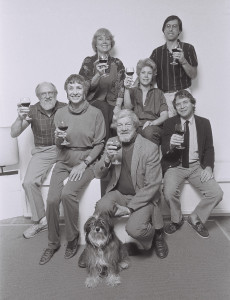 It was May 30, 1975 and most of the action was in Libbey Park where Michael Tilson Thomas was preparing to conduct the Ojai Music Festival. In a much smaller venue across the street there was another buzz happening — a new gallery in town was hosting its grand opening –- it was one of the only galleries in town at that time! Three couples, fairly new to town, decided to show an eclectic mix of pottery, jewelry, paintings, and sculpture, some of which they themselves made.
It was May 30, 1975 and most of the action was in Libbey Park where Michael Tilson Thomas was preparing to conduct the Ojai Music Festival. In a much smaller venue across the street there was another buzz happening — a new gallery in town was hosting its grand opening –- it was one of the only galleries in town at that time! Three couples, fairly new to town, decided to show an eclectic mix of pottery, jewelry, paintings, and sculpture, some of which they themselves made.
Truly one of the first places dedicated to contemporary fine craft in Southern California, it was known then as Running Ridge Gallery. The original partners were Bob and Barbara Grabowski, Bob’s sister Ruth Farnham and her husband John, and Jett and Sharon Spencer. Bob, Jett, and Sharon made jewelry; Ruth was a painter; and John was a sculptor. Barbara was the business manager.
Gerard McBurney, Director & Creative Director
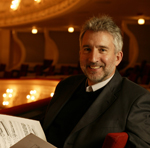 Gerard McBurney is a British composer and writer about music. Since 2006 he has been Artistic Programming Advisor at the Chicago Symphony Orchestra and Creative Director of their Beyond the Score® series. In this capacity, he had the good fortune to work closely with Pierre Boulez on a number of memorable occasions.
Gerard McBurney is a British composer and writer about music. Since 2006 he has been Artistic Programming Advisor at the Chicago Symphony Orchestra and Creative Director of their Beyond the Score® series. In this capacity, he had the good fortune to work closely with Pierre Boulez on a number of memorable occasions.
Learn more on the Beyond the Score® website >>
Photo Credit: Todd Rosenberg
Christina McPhee: How Ojai Inspires Me As An Artist
The audience members of the Ojai Music Festival are as eclectic, imaginative and passionate as the music performed and the artists who are engaged in the creative process. Once such patron is Christina McPhee, visual artist from the Central Coast, who shared her work with us inspired by the 2014 Festival.
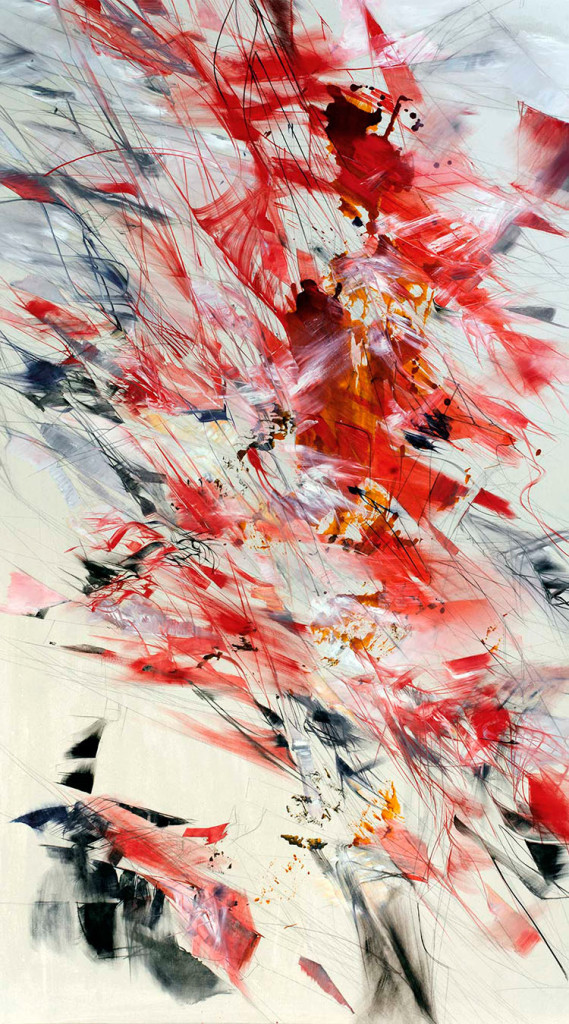
The Muslin-Drum // Ligeti Iterations :
As a child, I found sanctuary in piano practice. Each evening the required hour came with the delight of the fall of the keys, the fascination of synaesthesia’s colors with chromatic chords, and escape from external pressures. For no audience but my own brain, my ears connected with digits, and with structures of flight. Later I sought to materialize this experience in painting.
With my partner I built canvasses in translucent muslin, coated in clear, slightly crystalline rabbit skin glue, with taut surface like a drum. From the first the support and surface conditions set up a performance situation around color-shapes, linear thresholds and tensions of the stretched canvas. Interacting with these constraints set me into a graphic predictive process, to ramify lines from sound. The delicate surfaces pinged as the graphite slides across the rabbit skin. Dyes threw across the slightly glittering crystals of rabbit-skin embedded in the glue ground. The soft swish of liner brush extended murmur and glissando. Tcherepnin, Varese, Cage and Harrison crossed through this matrix. None stayed as long as Ligeti. Hundreds of repeats, listening to the cd of György Ligeti’s Piano Etudes, Books 1 and 2, as performed by Jeremy Denk in a Nonesuch recording of 2012, cast the studies into iterative material abstractions. Then I heard Denk play them live in concert at the Ojai Music Festival, in June 2014. An indelible impression, almost, a neurologic imprint…Elements of surprise, hurling passages, glissandos, rushes and stillnesses, darknesses leaching into light, shapes tumbling and subsisting in secret rhythms— these formal and performance incidents translate a code for a kinetic action through the instrument of the body onto the radiant surface.
10 Questions with John Luther Adams
Written by M. Sean Ryan with permission from BMI.
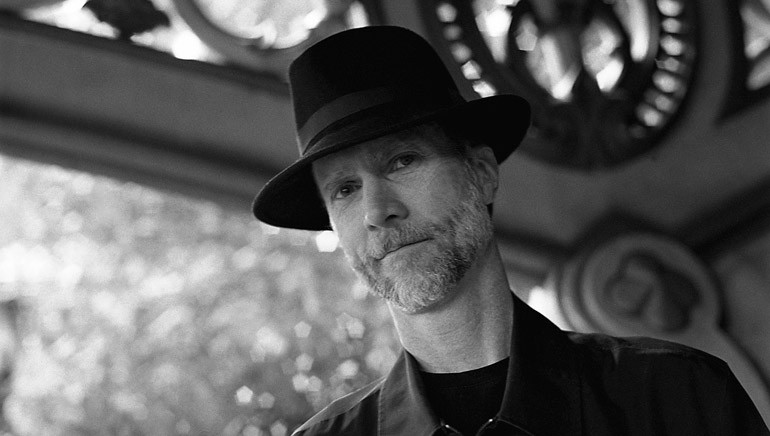
In writing or analyzing a piece of music, the notion of space is both multifaceted and unavoidable. For John Luther Adams, it is the root. His environmentally-minded compositions aren’t just inspired by geography and places he finds meaningful. Sometimes their performance demands musicians forgo the stage, scattering strategically instead around vast indoor and outdoor venues.
In this way, Adams has garnered a reputation for highlighting how we fit in to the world around us, musical or not. Pieces like “Inuksuit,” or, more recently, “Sila,” continue to redefine the immediate environment in which they’re performed, while his titanic opus “Become Ocean” has earned him two GRAMMY nominations as well as last year’s Pulitzer Prize in music. In addition to these prestigious honors, Columbia University’s School of the Arts recently announced that Adams will be awarded their $50,000 William Schuman Award this fall. The award recognizes “the lifetime achievement of an American composer whose works have been widely performed and generally acknowledged to be of lasting significance.”
On a recent call from New York City, the 62-year-old Adams opened up about the road that’s led him to his current standing as a world-renowned composer.
How did your relationship with BMI begin?
It would go back to the 1980s. I was a young composer thinking about affiliating with a performing rights organization, and ultimately what persuaded me — what did it was Ralph Jackson. A couple of years ago I wrote a piece on Ralph’s retirement singing his praises and talking about who he is and the difference he has made, not only in my life but in the lives of so many other composers.
In the larger musical landscape of new music, classical music, contemporary concert music — whatever you call this stuff that I’m involved with — Ralph is truly a force of nature. Now Deirdre Chadwick has taken over and like Ralph she’s an oboist. And like Ralph she’s a strong personality who cares passionately about this music. I feel really lucky to be working with her now.
In that stage of your career, when you moved to Alaska in the late ‘70s, your focus was political. Was music on the backburner?
Nothing took a backseat to anything else. I thought I could do it all: I thought I could be a full time environmental crusader; I thought I could live like Henry David Thoreau in the woods; I thought I could be a working composer, and I thought I could have a serious personal relationship and also play in the Fairbank Symphony. It took me a decade or so to realize that I had to make some choices. It was a very heady time. To be young and idealistic in Alaska in the late ‘70s and then into the early ‘80s — I wouldn’t trade it for anything.
View The 69th Festival Schedule For June 10-14, 2015
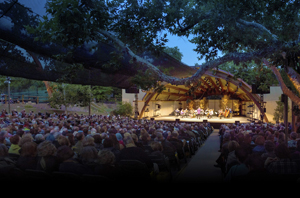
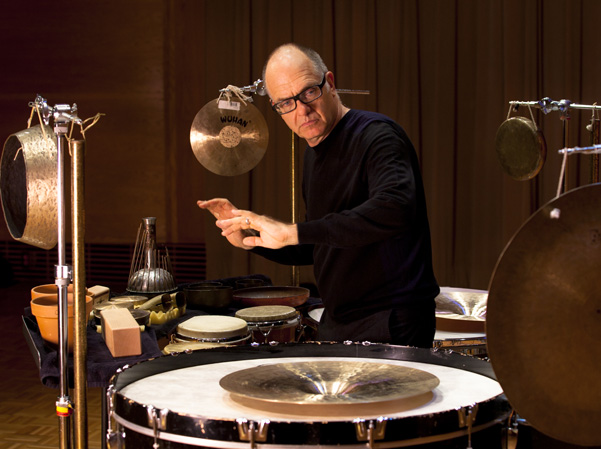 Percussionists are different. Their musical world has no fixed boundaries; there is no limit to the instruments they play and the sounds they make. There are no pretentious barriers between nature and artifice, no strictures on performing indoors or out. Their precursors reach back to the dawn of time and members of their guild are found in every culture. Hand a percussionist a random rock or the most exquisitely forged gong and he or she will make it speak, sometimes with breathtaking virtuosity born of the simplest gestures by which we interact, though touch, with our material world. So what does it mean that Ojai’s 2015 music director is a percussionist? Quite a lot if that percussionist is Steven Schick.
Percussionists are different. Their musical world has no fixed boundaries; there is no limit to the instruments they play and the sounds they make. There are no pretentious barriers between nature and artifice, no strictures on performing indoors or out. Their precursors reach back to the dawn of time and members of their guild are found in every culture. Hand a percussionist a random rock or the most exquisitely forged gong and he or she will make it speak, sometimes with breathtaking virtuosity born of the simplest gestures by which we interact, though touch, with our material world. So what does it mean that Ojai’s 2015 music director is a percussionist? Quite a lot if that percussionist is Steven Schick.
No one has done more to champion, interpret, and expand the repertory of contemporary percussion music than Steven Schick. Not only has he mastered the entire solo repertory – and more than doubled its size through commissions – but as a conductor, educator, and author he has deepened our understanding of the role of percussion in music’s past, present, and future. More importantly, as an artist of broad interests and deep convictions he has explored cultural issues well beyond the already boundless frontiers of his chosen specialization.
To a percussionist’s ear music begins with rhythm, color, and gesture and these are the elements that form the nexus of the diverse works and decidedly international array of composers of this all 20th– and 21st-century festival. Naturally, we’ll hear Steven Schick perform classics of the solo percussion repertory – compositions by Stockhausen, Xenakis, and Globokar, as well as more recent compositions by David Lang and Kaija Saariaho, and the American premiere of Roland Auzet’s staging of Kurt Schwitter’s Dadist masterpiece, Ursonate. But Steve will also conduct ICE (International Contemporary Ensemble), red fish blue fish, Renga, and musicians from CalArts, groups with which he is closely identified, in a broad array of ensemble works of varied scorings, including the West Coast premiere of John Luther Adams’ Sila. Among the distinguished soloists is cellist Maya Beiser playing pieces by Osvaldo Golijov, Michael Harrison, and Chinary Ung.
Other highlights are a sunrise performance of Morton Feldman’s For Philip Guston in which Steve is joined by flutist Claire Chase and pianist Sarah Rothenberg, Lou Harrison’s Concerto for Pipa featuring Wu Man, and Messiaen’s Vision de l’amen with pianists Gloria Cheng and Vicki Ray. This year’s “old timers” include Copland, Chavez, Ginastera, and Varèse, all with scores new to Ojai, save one late-night chestnut: Appalachian Spring.
2015 marks the beginning of a three-year celebration of Ojai’s roots in Southern California, where open exploration and cross-cultural dialogue are written into the DNA. It is therefore especially apt that this festival opens with a Wednesday night multimedia tribute to Pierre Boulez, seven-time festival director, on the occasion of his 90th birthday. Four concerts are devoted to his music, each in creative juxtaposition with works by Béla Bartók: the six string quartets and, as the finale, the Sonata for Two Pianos and Percussion. This means Steven Schick will have the last word: a snare drum diminuendo with which he ushers us across the fluid borders of his imagination into silence.
– Christopher Hailey
Christopher Hailey is a music historian specializing in new music. He is the Ojai Music Festival’s longtime annotator and host of Concert Insights, the Festival’s in-depth discussions held before each concert.
Listen and view Steven Schick’s playlist >>
View the complete 2015 Schedule >>
Embrace the Ojai Experience! Purchase your series passes now >>
Music Directors
1948 Thor Johnson and Edward Rebner
1949 Thor Johnson
1950 Thor Johnson
1951 William Steinberg
1952 Thor Johnson
1953 Thor Johnson
1954 Robert Craft
1955 Robert Craft, Igor Stravinsky
1956 Robert Craft, Igor Stravinsky
1957 Aaron Copland, Ingolf Dahl
1958 Aaron Copland
1959 Robert Craft
1960 Henri Temianka
1961 Lukas Foss
1962 Lukas Foss
1963 Lukas Foss
1964 Ingolf Dahl
1965 Ingolf Dahl
1966 Ingolf Dahl
1967 Pierre Boulez
1968 Robert LaMarchina, Lawrence Foster, and Michael Tilson Thomas
1969 Michael Zearott, Stefan Minde,
and Michael Tilson Thomas
1970 Pierre Boulez
1971 Gerhard Samuel
1972 Michael Zearott
1973 Michael Tilson Thomas
1974 Michael Tilson Thomas
1975 Michael Tilson Thomas
1976 Aaron Copland
1977 Michael Tilson Thomas
1978 Calvin Simmons
1979 Lukas Foss
1980 Lukas Foss
1981 Daniel Lewis
1982 Robert Craft
1983 Daniel Lewis
1984 Pierre Boulez
1986 Kent Nagano and Stephen Mosko
1987 Lukas Foss
1988 Nicholas McGegan, Sir Peter Maxwell Davies, and Diane Wittry
1989 Pierre Boulez
1990 Stephen Mosko
1991 John Harbison, Sir Peter Maxwell Davies
1992 Pierre Boulez
1993 John Adams
1994 Michael Tilson Thomas
1995 Kent Nagano
1996 Pierre Boulez
1997 Emanuel Ax, Daniel Harding
1998 Mitsuko Uchida, David Zinman
1999 Esa-Pekka Salonen
2000 Sir Simon Rattle
2001 Esa-Pekka Salonen
2002 Emerson String Quartet
2003 Pierre Boulez
2004 Kent Nagano
2005 Oliver Knussen
2006 Robert Spano
2007 Pierre-Laurent Aimard
2008 David Robertson
2009 Eighth blackbird
2010 George Benjamin
2011 Dawn Upshaw
2012 Leif Ove Andsnes
2013 Mark Morris
2014 Jeremy Denk
2015 Steven Schick
2016 Peter Sellars
2017 Vijay Iyer
2018 Patricia Kopatchinskaja
2019 Barbara Hannigan
Festival Milestones
1947 May 4 – First concert features French baritone Martial Singher with Paul Ulanowsky in a recital covering repertoire from Rameau to Ravel at Ojai’s Nordhoff Auditorium.
1948 Lawrence Morton becomes first program annotator and begins his association with the Festival; Igor Stravinky’s Histoire du soldat (A Solider’s Tale) is billed as the premiere of the final version of his work.
1949 Ojai Festivals, Ltd. is officially launched as a non-profit organization.
1952 The Festival holds first outdoor concert at the Libbey Bowl.
1953 Lukas Foss makes his first Ojai appearance as conductor.
1954 Lawrence Morton becomes first Artistic Director.
1955 Igor Stravinsky conducts his own works at the Festival.
1956 Stravinsky conducts his own Les Noces for Ojai audiences; permanent benches are added to the Libbey Bowl doubling the seating capacity to 750.
1957 Aaron Copland makes Ojai debut.
1960 For the first time, all Festival concerts are held at the Libbey Bowl.
1962 Jazz flutist Eric Dolphy performs Density 21.5 for solo flute by Edgard Varèse; the Festival includes a four-day prelude of discussions lectures/concerts with Luciano Berio, Milton Babbitt, Gunther Schuller, and Lukas Foss.
1963 Foss experiments with music from Don Giovanni using three orchestras to create a kind of stereophonic surround sound at the Bowl; Mauricio Kagel is guest composer/conductor.
1964 Ingolf Dahl (USC faculty composer) is Music Director and Ojai becomes a northern “outpost” for the USC music department.
1965 19-year-old pianist Michael Tilson Thomas is featured in concert; Harold Shapero’s Serenade in D for String Orchestra and Ramiro Cortes’ Concerto for Violin and Strings are premiered.
1966 Ojai celebrates its 20th anniversary; David Raskin, film composer and friend of Lawrence Morton, writes five special fanfares for the Festival.
1967 Lawrence Morton returns as Artistic Director; Pierre Boulez makes his Ojai debut in his fifth American appearance; Boulez delays the start time of a performance to allow the Santa Paula Railroad “Orange” train to pass.
1968 Pianist James Levine makes a guest appearance; Ingolf Dahl is Music Director once again and the Debut Orchestra of the Young Musicians Foundation is in residence.
1969 The trio of Michael Tilson Thomas, Michael Zearott, and Stefan Minde lead the Festival as co-Music Directors.
1970 Boulez returns for his second visit to Ojai and includes the first American performance of his Domaines; the Los Angeles Philharmonic makes its Ojai debut.
1971 Ojai celebrates its 25th anniversary; Gerhard Samuel makes first appearance as conductor and Artistic Director; Lou Harrison’s Chinese Classical Music Ensemble presents a morning concert of Chinese music.
1972 Ethnic music is highlighted under the baton of Michael Zearott including Mariachi music from Jalisco, Mexico, drum music from West Africa, and the Balinese group, Gamelan Angklung.
1973 Michael Tilson Thomas is Music Director for the next three seasons; Tilson Thomas brings minimalism to Ojai with Steve Reich’s Four Organs with Percussion plus John Cage’s Three Dances for Two Amplified Prepared Pianos, both in their West Coast premieres; annual jazz concerts begin in Ojai.
1975 Charles Wuorinen’s A Reliquary for Igor Stravinsky, a joint Ojai Festival/Buffalo Philharmonic commission, is given its world premiere.
1976 Copland returns to Ojai as does Lawrence Morton as Artistic Director.
1978 Young African-American conductor Calvin Simmons (assistant conductor of the Los Angeles Philharmonic) takes the baton as Music Director; Stravinsky’s Oedipus Rex is performed.
1980 Sequoia Quartet, UC San Diego-based SONOR and the Los Angeles Ballet perform.
1981 USC Symphony’s director Daniel Lewis is the Festival Music Director; the program includes the West Coast premiere of Benjamin Britten’s Our Hunting Fathers with tenor Jonathan Mack and the U.S. premiere of Clementi’s Symphony No. 4.
1982 The Festival presents a Stravinsky Centennial with Robert Craft as Music Director featuring all or part of nearly 40 compositions by the master in his honor.
1983 The Kronos Quartet and The Musicians of Swanne Alley make their Ojai debuts; Ravi Shankar returns.
1985 Under the recommendation of Pierre Boulez, young conductor Kent Nagano makes his first Ojai appearance as Music Director; The music of Olivier Messiaen is highlighted and attends his first Ojai Festival; Messiaen’s wife Yvonne Loriod performs in a piano recital.
1986 Due to the success of his first Ojai Festival, Nagano is invited to return as Music Director; Composer-conductor-percussionist Stephen “Lucky” Mosko conducts Saturday evening’s concert, which includes the West Coast premiere of John Adams’ The Chairman Dances.
1987 Lukas Foss comes back to Ojai; the Festival is dedicated to Lawrence Morton who passes away earlier in the year.
1988 Peter Maxwell-Davies is composer-in-residence; Nicholas McGegan is Music Director along with his Philharmonia Baroque Orchestra, which was also in residence this season.
1989 The Festival highlights the work of composer György Ligeti; Boulez is Music Director.
1990 Stephen “Lucky” Mosko returns but this time as Music Director and Elliott Carter is the composer-in-residence; for the first time in Festival history there is no music from the past or music by any European composers.
1992 Boulez as Music Director brings famed director Peter Sellars to Ojai; Sellars stages Stravinsky’s Histoire du soldat in its fifth incarnation in Ojai; however, he re-stages the work using inner-city actors in the cast and the back of a flatbed pick-up truck as part of the setting; Ara Guzelimian is named Artistic Director.
1993 John Adams makes his first Ojai appearance as Music Director highlighting the work of Cage, Reich and Gorecki.
1994 For his seventh Festival, Michael Tilson Thomas journeys back to Ojai as Music Director along with his New World Symphony.
1996 The 50th Anniversary of the Ojai Music Festival is led by Pierre Boulez; pianist Mitsuko Uchida makes her first appearance at the Festival.
1997 Pianist Emanuel Ax is Music Director; Daniel Harding is principal conductor; Artistic Director Ara Guzelimian bids farewell to Festival.
1998 Ernest Fleischmann begins his tenure as the Festival’s third Artistic Director; Mitsuko Uchida is Music Director; David Zinman is principal conductor.
1999 Esa-Pekka Salonen makes his Ojai debut and creates a program dedicated to Finnish music. Composer-in-residence is Magnus Lindberg.
2000 Sir Simon Rattle makes his Ojai debut as Music Director; the Festival features the U.S. premiere of Mark-Anthony Turnage’s Kai and the West Coast premiere of Thomas Adès’ Asyla.
2002 Marking the first time for a group, the Emerson String Quartet is Music Director. 2003 Pierre Boulez returns as Music Director with the Los Angeles Philharmonic.
2004 Kent Nagano returns, this time with his Los Angeles Opera Orchestra, which makes its Ojai debut; Thomas W. Morris begins his tenure as the Festival’s fourth Artistic Director; the Festival presents the world premiere of Korean composer Unsuk Chin’s SNAGS & SNARLS.
2005 British composer/conductor Oliver Knussen is Music Director; The Cleveland Orchestra with Music Director Franz Welser-Most; British composer Jonathan Cole’s Testament is given its world premiere and is a joint commission by the Sue Knussen Commissioning Fund, London Sinfonietta and the Festival.
2006 The 60th anniversary of the Ojai Music Festival is led by Robert Spano as Music Director and featured composer is Osvaldo Golijov; Golijov’s revised concert version of Ainadamar is given its West Coast premiere
2007 French pianist, Pierre Laurent Aimard, makes his Festival debut as Music Director along with Hungarian composer/conductor Peter Eötvös. The program includes two US premieres by Eötvös– Sonata per Sei and Chinese Opera.
2008 Conductor David Robertson marks his first Festival as music director. Composer Steve Reich returns after a 35-year absence with his music at the centerpiece of the Festival. Dawn Upshaw returns for her third visit to Ojai. French composer Francois Narboni enjoys the U.S. premiere of his work El Gran Masturbador and Michael Jarrell’s Cassandre makes its West Coast premiere.
2009 Chamber ensemble eighth blackbird debuts as the Festival’s second ensemble to be Music Director. The program includes the co-commissioned premiere of Slide composed by Rinde Eckert and Steven Mackey.
2010 British composer and Messiaen student, George Benjamin, makes his Festival debut. Program includes works of Benjamin, including the West Coast premiere of Into the Little Hill. Also featured is the music of Frank Zappa, the German orchestra Ensemble Modern, and a selection of Indian Ragas
2011 Dawn Upshaw returns for her fourth appearance, this time as music director celebrating the opening of the new Libbey Bowl. World premieres include the staged production of George Crumb’s The Winds of Destiny directed by Peter Sellars and composer Maria Schneider’s Winter Morning Walks performed by Upshaw. The Festival launches Ojai At Berkeley, which brings three Ojai concerts to Cal Performances at UC Berkeley.
2012 The Festival presented the West Coast premiere of John Luther Adams’ Inuksuit at Libbey Park performed by 48 musicians and the American premiere of Bent Sørensen’s Piano Concerto No. 2, “La Mattina,” performed by Music Director Leif Ove Andsnes
2013 Mark Morris, the first dancer/choreographer to serve as Music Director presents a program celebrating on iconic American composers Lou Harrison, Henry Cowell and John Cage
2014 MacArthur Fellow and pianist Jeremy Denk takes on the helm as Music Director. The Festival features the world premiere of the comic opera, The Classical Style: An Opera (of sorts) with music by Pulitzer-Prize winning composer Steven Stucky and a libretto by Jeremy Denk.
2015 The Festival celebrates the 90th birthday of Pierre Boulez with the West Coast premiere of A Pierre Dream; Steven Schick is music director, the first time a percussionist is named in this role; Ojai presents two west coast premieres by Pulitzer Prize winner John Luther Adams: Sila: The Breath of the World and Become River.
2016 Celebrated theatre/opera director Peter Sellars returns as music director and leads the Festival in its milestone 70th year with the US premiere of Kaija Saariaho’s Passion de Simone (chamber version), world premiere of Caroline Shaw’s This might also be a form of dreaming and the world premiere of Josephine Baker: A Portrait featuring Julia Bullock and Tyshawn Sorey.
2017 MacArthur prize winner/Downbeat Magazine musician of the year Vijay Iyer makes his Festival debut and brings a diverse community of new artists to Ojai; George Lewis’s Afterword, an opera – a celebration of the Association for the Advancement of Creative Musicians (AACM).
2018 Violinist Patricia Kopatchinskaja leads Ojai as Music Director featuring premieres and news works, including her own stage conceptualizations of Bye Bye Beethoven and Dies Irae.
2019 Soprano, conductor, teacher Barbara Hannigan introduces Ojai audiences to the LUDWIG orchestra and her mentoring program Equilibrium Young Artists; presented the staged version of Stravinsky’s The Rake’s Progress; the Festival recognizes Artistic Director Thomas W. Morris’ final year after a 16-year artistic legacy.
Press Quotes
“Ojai Music Festival has been raising a finely calibrated ruckus each spring since 1947…. To attend Ojai is to enter a happily topsy-turvy world where longtime patrons are as avid for new music as they are for classic repertory.”
– The New Yorker
“There’s nothing quite like Ojai. The festival is to the music world what the town is to the rest of Southern California: a lovably eccentric jewel, a tiny explosion of beauty, weirdness and overkill. The art is rigorous, but the vibe is relaxed, smiling and uncrowded — part weekend getaway, part laboratory.”
– New York Times
“The Ojai faithful – an audience prized for its open minds and congeniality – proved ever faithful.”
– Los Angeles Times
“Ojai has earned its reputation as one of the most important events on the annual American cultural calendar.”
– Gramophone
“There is nothing dutiful about the approach of either the performers or the audience, but a truly festive spirit in the way they come together for this annual long weekend. Few other audiences are as open-minded or curious as those who gather on the benches or lawns of Libbey Bowl in Ojai’s park.
– Sunday Telegraph
“If the music wafting on this valley’s breezes tells us anything, it’s that history lives at Ojai.”
– Wall Street Journal
“No walls, no floor, no ceiling, no acoustic paneling. Just grass, trees, birds, bees, and earnest music making … Ojai isn’t quite a fantasy island in the South Pacific, but its surreal, atmospheric beauty isn’t far removed … Who would have though that this quiet unassuming city … would, for one weekend a year, become a mecca for today’s contemporary music intelligentsia and maintain a loyal following in the process?”
– Symphony Magazine
“It’s [The Festival] the rubbing-together of the primitive and the sophisticated that lends Ojai its charm. The outdoor setting removes the preciousness from serious musical endeavour without compromising standards, while its intimacy seals the performer-audience relationship…”
– Financial Times
“… legendary in new-music circles. Here in the foothills 85 miles north of Los Angeles, Stravinsky, Copland, Boulez, Messiaen, Lukas Foss, Tilson Thomas, John Adams, Salonen, Mitsuko Uchida, Emanuel Ax, and the Emerson String Quartet have all found a brief musical haven.”
– Gramophone
“…it’s the interaction of extraordinary composers, conductors and performers that gives Ojai its symbiotic essence and makes it a small but mighty festival.”
– Ventura County Star
“…compact but wide-ranging… [one of] the summer’s best performing arts festivals.”
– Travel & Leisure Magazine
“…this extraordinary weekend, its triumphant proclamation of the mingled roles of music and the human spirit.”
– LA Weekly
“In this case, it was not Vienna, nor Berlin, but the small festival of Ojai that – as far as the interpretation of great symphonic works is concerned – could be seen as the hub of the musical world.”
– Frankfurter Allgemeine Zeitung
“The annual Ojai Festival is a miniature, less expensive California version of Salzburg — an out-of-the-way place where passionate musicians, critics and fans can gather, schmooze and pontificate, and in between listen to some world-class music.”
– Andante
“No arm’s-length tolerance of new music here. Upscale locals, Los Angeles intelligentsia and out-of-towners crowd Libbey Bowl’s near-primitive outdoor facilities for four days and devour music normal audiences might greet with bewilderment.”
– New York Times
“It’s close to nirvana”
– Orange County Register
Artist Quotes
“I like this small community, and I like the fact that this is a very compact festival.”
– Pierre Boulez
“Ojai is very different, of course. It’s really predicated upon the notion of a very intelligent, musically aware audience that is interested in hearing unusual works.”
– John Adams
“I love the town, and I admire what the festival has stood for since its inception. It has always been a very adventurous festival, one that has encouraged new artists and very interesting elements of the avant-garde. At the same time, it has focused on the qualities of the recognized masterpieces of the musical civilization. I don’t mean that to sound ponderous. Everything about Ojai is so relaxed and natural. That’s one of the great charms of being there.”
– Michael Tilson Thomas
“Looking back over Ojai history, the Festivals has a history of giving people a chance before they become really recognized for their talents. Stravinsky, Boulez, Tilson Thomas. It is an important pivotal point for a lot of artists…And there is the unusual mingling with people. Real people. The absence of slickness. No pretense. No feigning or pretending. That is refreshing”
– Kent Nagano
“Ojai’s marvelous and improbably large fan-base reacted to everything that we threw at them with visible fascination, audible excitement and a spirit of adventure that I’ve not seen elsewhere!”
– eighth blackbird
”Reports over the years had lead me to believe I would enjoy Ojai – but not to the degree I experienced last week. What an extraordinary place, what a wonderful venue to perform, what a remarkable audience…added to that, the beauty of the valley, the glory of the light, the stars and the birdsong…”
– George Benjamin
“The first time I visited, in 2001, I had no idea of the beauties to be found in this eclectic small town that has played host to some of music’s greatest luminaries. There is a very special spirit of collaboration here, fostered in part by the gorgeous natural setting and also by the friendly engagement of everyone involved. Singing the music of John Adams, Luciano Berio, and Osvaldo Golijov in three Ojai Festivals over the past decade has been a true highlight for me.”
– Dawn Upshaw
“Ojai is like a dream. For me personally, it was a great reality where my two cultures met. I couldn’t believe that I was staying right there on famous Ventura beach, the heart and soul of California surfing. And there up the hill in Ojai was the heart and soul of American great music-making.”
– Richard Tognetti (Australian Chamber Orchestra)
“I’m incredibly grateful to the town of Ojai and the place, and all the ridiculous amount of people here who help make this mildly insane weekend of music possible.”
– Jeremy Denk
“Ojai’s marvelous and improbably large fan-base reacted to everything that we threw at them with visible fascination, audible excitement and a spirit of adventure that I’ve not seen elsewhere!”
– eighth blackbird
“…Ojai has the best audience in the world.”
– Leif Ove Andsnes
Festival History
In the Ojai Spirit
A look at the eclectic history of the Ojai Music Festival
For more than six decades the Ojai Music Festival has been a laboratory for the special chemistry that results from combining insatiable curiosity with unbounded creativity. The formula is simple: Each year a music director is given the freedom and resources to imagine four days of musical brainstorming. Some have approached their task with caution, fearing that Ojai might be like other places. But, of course, it’s not. More often this unique blend of enchanted setting and an audience voracious in its appetite for challenge and discovery has inspired a distinguished series of conductors, performers, composers to push at boundaries and stretch limits.
At its inception in 1947, under the guidance of Festival founder John Bauer and conductor Thor Johnson, the Festival featured a balance of classics and more contemporary fare. By the time Lawrence Morton took over as Artistic Director in 1954 the emphasis had shifted to New Music and Ojai soon became the showcase as well as a home-away-from-home for such 20th century giants as Luciano Berio, Pierre Boulez, Elliott Carter, Aaron Copland, Lou Harrison, and Olivier Messiaen, not to mention two Southern California “locals”: Arnold Schoenberg and Igor Stravinsky. It was Morton who established the tradition of rotating Music Directors and with this innovation each year’s Festival became the reflection of a succession of larger-than-life personalities, including Robert Craft (joined in 1955 and 1956 by Stravinsky), Copland, Ingolf Dahl, the late Lukas Foss, Boulez, Peter Maxwell-Davies, as well as such rising stars as Michael Tilson Thomas, Calvin Simmons, Kent Nagano, John Adams, Esa-Pekka Salonen, Pierre-Laurent Aimard, and David Robertson. Through the years Ojai’s Music Directors have invited distinguished soloists, first-rate chamber ensembles, and world-class orchestras to join them in exploring the intersection between New Music and everything from jazz and improvisation to electronics and computers; dance, theater, and experimental staging to social and political issues, not to mention repertory that might go back to the Middle Ages or reach across the globe.
Looking back, it would be difficult to identify any overarching aesthetic premise, though from year to year there has been no shortage of agendas. Rather, the thread running through these past decades has been this Festival’s consistency in promoting creativity and innovation. Here in Ojai hallowed masterpieces and in-your-face experiments can be uneasy bedfellows sharing a berth that is a pedestal of repose for one, a trampoline for the other. And that rumble you hear? It is the steady grumbling from an audience whose outspoken views on any and every subject are the entitlement of its loyalty. Its passion is the true barometer of the health of this Festival. No smugness here; no indifference, either. This is a place for enthusiasms, often excessive, and opinions, sometimes vociferous, and a hunger for shared discovery that reaffirms, year after year, why music matters in the first place.
-Christopher Hailey
General Facts
LOCATION
• Ojai Valley population: 7,862
• Libbey Bowl: 964 seats and 375 lawn
FINANCIALS
• Operating Budget: $2 million
• Revenue sources: 75% donations, grants and sponsors; 25% ticket
LEADERSHIP
• Board members: 18
• Board of Governors: 28
AUDIENCE
• 50% subscribers are donors
• 59% of ticket buyers return every year
• Number of Donors: 311
• Tickets sold: 5,800
• Attendance at free community events: 2,000
• Digital audience: 93,492
GEOGRAPHIC BASE
• 43% Los Angeles
• 34% Ojai, Ventura and Santa Barbara Counties
• 15% Other California (San Diego, Orange County, Northern California)
• 8% Out of State
BRAVO MUSIC EDUCATION
• Public school students served in the Ojai Valley and area Ventura schools: 2,800
• Repeat experiences with students: 32,250
• Free workshops in public schools: 1,075
• 51% students classified as economically disadvantaged
• Schools and senior centers served: 18
• Artists-in-residence: 7
• Arts management interns: 15
*as of October 1, 2018
Ethan Treiman, composer
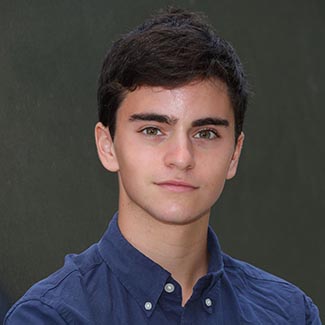
 Ethan Treiman (17) is a junior at Crossroads School for the Arts and Sciences in Santa Monica, California. He is looking forward to beginning his two year fellowship with the Los Angeles Philharmonic Composer Fellowship Program in fall, 2015. At Crossroads, he has taken courses in music theory taught by Mary Ann Cummins and Richard Grayson. Ethan is interested in musical theater and drama and has acted in several theater shows at Crossroads. He has performed with Crossroads’ 21st Street Singers Choir. Ethan draws inspiration from the music of George Gershwin, Claude Debussy, and Alberto Ginastera, along with John Williams and Stephen Sondheim. Ethan enjoys running Cross Country and Track, and hopes to one day compose music for stage and film.
Ethan Treiman (17) is a junior at Crossroads School for the Arts and Sciences in Santa Monica, California. He is looking forward to beginning his two year fellowship with the Los Angeles Philharmonic Composer Fellowship Program in fall, 2015. At Crossroads, he has taken courses in music theory taught by Mary Ann Cummins and Richard Grayson. Ethan is interested in musical theater and drama and has acted in several theater shows at Crossroads. He has performed with Crossroads’ 21st Street Singers Choir. Ethan draws inspiration from the music of George Gershwin, Claude Debussy, and Alberto Ginastera, along with John Williams and Stephen Sondheim. Ethan enjoys running Cross Country and Track, and hopes to one day compose music for stage and film.
Mark Applebaum
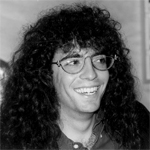 Mark Applebaum (b. 1967, Chicago) is Associate Professor of Composition and Theory at Stanford University where he served as John Philip Coghlan Fellow and received the 2003 Walter J. Gores Award for excellence in teaching. He received his Ph.D. in composition from the University of California at San Diego where he studied principally with Brian Ferneyhough. His solo, chamber, choral, orchestral, operatic, and electroacoustic work has been performed throughout the United States, Europe, Africa, and Asia.
Mark Applebaum (b. 1967, Chicago) is Associate Professor of Composition and Theory at Stanford University where he served as John Philip Coghlan Fellow and received the 2003 Walter J. Gores Award for excellence in teaching. He received his Ph.D. in composition from the University of California at San Diego where he studied principally with Brian Ferneyhough. His solo, chamber, choral, orchestral, operatic, and electroacoustic work has been performed throughout the United States, Europe, Africa, and Asia.
Carlos Chávez
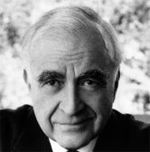 Born 13 June 1899 in Mexico City, Carlos Chávez was a renowned composer, conductor, and educator whose distinctive, often highly percussive music synthesized elements of Mexican, Indian, and Spanish-Mexican influence. A prolific writer of music and music criticism, Chávez’s oeuvre includes five ballets, seven symphonies, four concertos, a cantata and opera, and innumerable pieces for voice, piano, and chamber ensemble; he wrote two books (of which Toward A New Music: Music and Electricity became a major contribution and fundamental document of new musical thought) and more than 200 articles on music.
Born 13 June 1899 in Mexico City, Carlos Chávez was a renowned composer, conductor, and educator whose distinctive, often highly percussive music synthesized elements of Mexican, Indian, and Spanish-Mexican influence. A prolific writer of music and music criticism, Chávez’s oeuvre includes five ballets, seven symphonies, four concertos, a cantata and opera, and innumerable pieces for voice, piano, and chamber ensemble; he wrote two books (of which Toward A New Music: Music and Electricity became a major contribution and fundamental document of new musical thought) and more than 200 articles on music.

